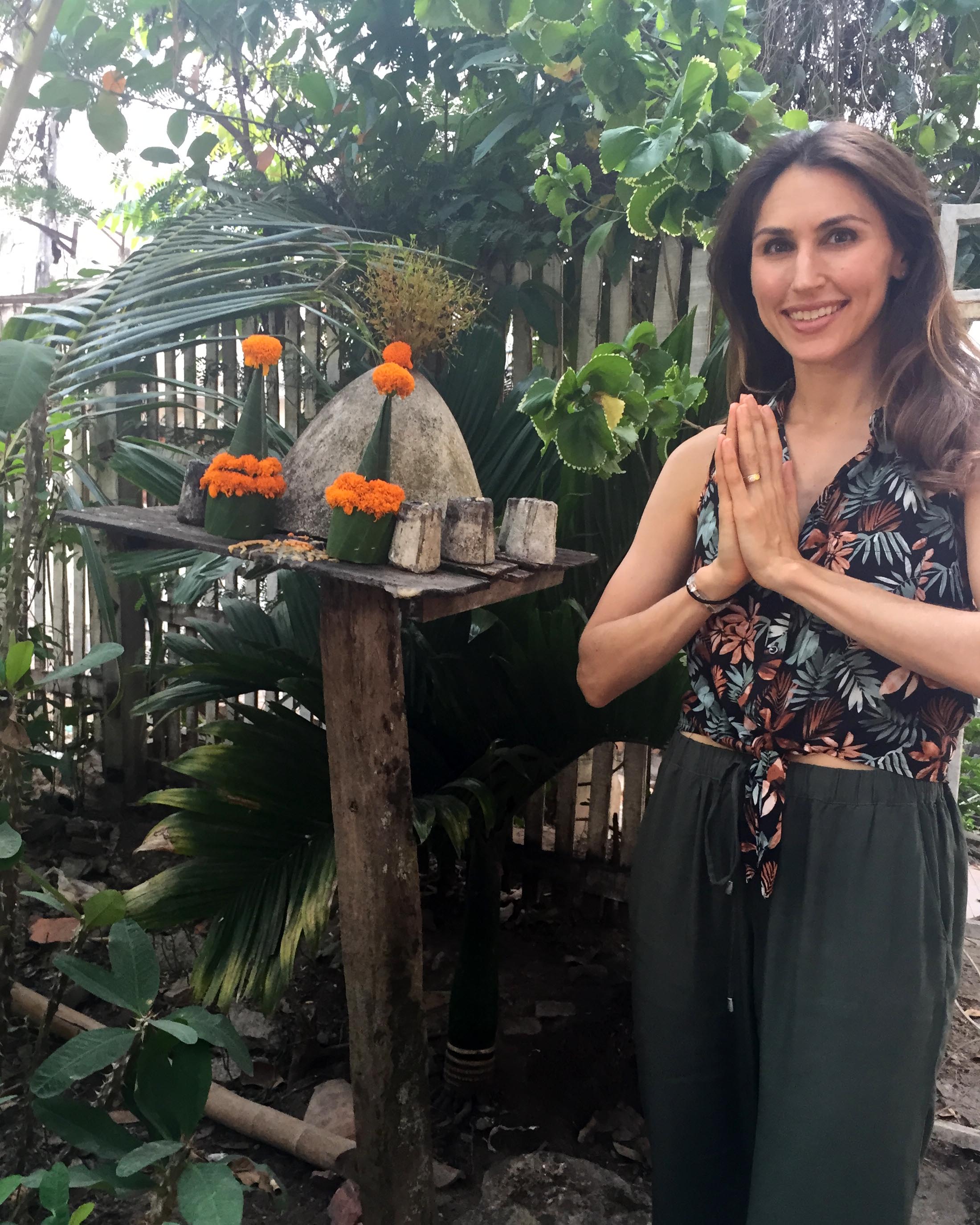
Marisa Cranfill
This home-made spirit house has a special name called tat. It is a fusion of ancestor worship, Buddhism and the spirit house tradition. The owner of this property built the tat with his own hands.
He says, “The tat comes from ancient times; we build them to honor our ancestors. This one is for my deceased mother and father.”
According to Jao Nit, a Lao cultural expert, ancestor worship came to Laos via Chinese culture. But while shrines to the ancestor spirits in China are usually kept indoors, in Laos they also have ancestor shrines outdoors, by the front entrance to the house. This outdoor characteristic may be from Buddhist influences. The rounded pyramid shape of the tat is a miniature model of a chedi, an ancient burial mound used in Buddhist tradition. At the top of the apex is a hole to insert simple offerings of garden flowers that sprout up like new life.
There is another important offering to the tat that I call a 'soul container' because of it's function to embody and enhance the life force energy or soul essence, called khwan in Lao. In Lao and Thai they are called baci and predate Buddhism. Baci are made from rolled banana leaf and are tipped with marigolds. Both the tat and the offerings of baci share simlar characterists: pyramid in shape and tipped with golden flowers.
What is striking about the tat is that it is perched on top of a platform and a single pillar post at eye level typical of a Thai sarn phra phoom style of spirit house. The Brahman priests in Thailand explain that the single pillar post of a sarn phra phoom represents Mt. Sumeru, the cosmic mountain of the Hindu gods. But I am beginning to question the idea that the single pillar post was originally Hindu at all. Generally scholars agree that there is less Hindu influence on Lao culture than there is in Thailand and Cambodia. I hypothesize that the ancient animists were already using a single pillar post to honor their local land guardian spirits before Hinduism came into Southeast Asia. It is possible that Hinduism grafted its cosmological models onto the pre-existing pillar of the earlier animists. This theory also explains why there are more single pillar spirit houses than four or six leg spirit houses around Luang Prabang.
I have never seen a tat spirit house like this in Thailand. The more I discover about Lao, the more I understand how different the neighboring cultures are. Coming from Thailand we are taught to think of Laos as a “little Thai brother” rather than its own cultural family. But Laos offers another rich glimpse into the spirit world; something that must be felt rather than seen with the naked eye. The tat is not only a fusion of ancestor worship, animism and Buddhism, it is a testimony of the unique spirit of Lao and their own valuable heritage.
